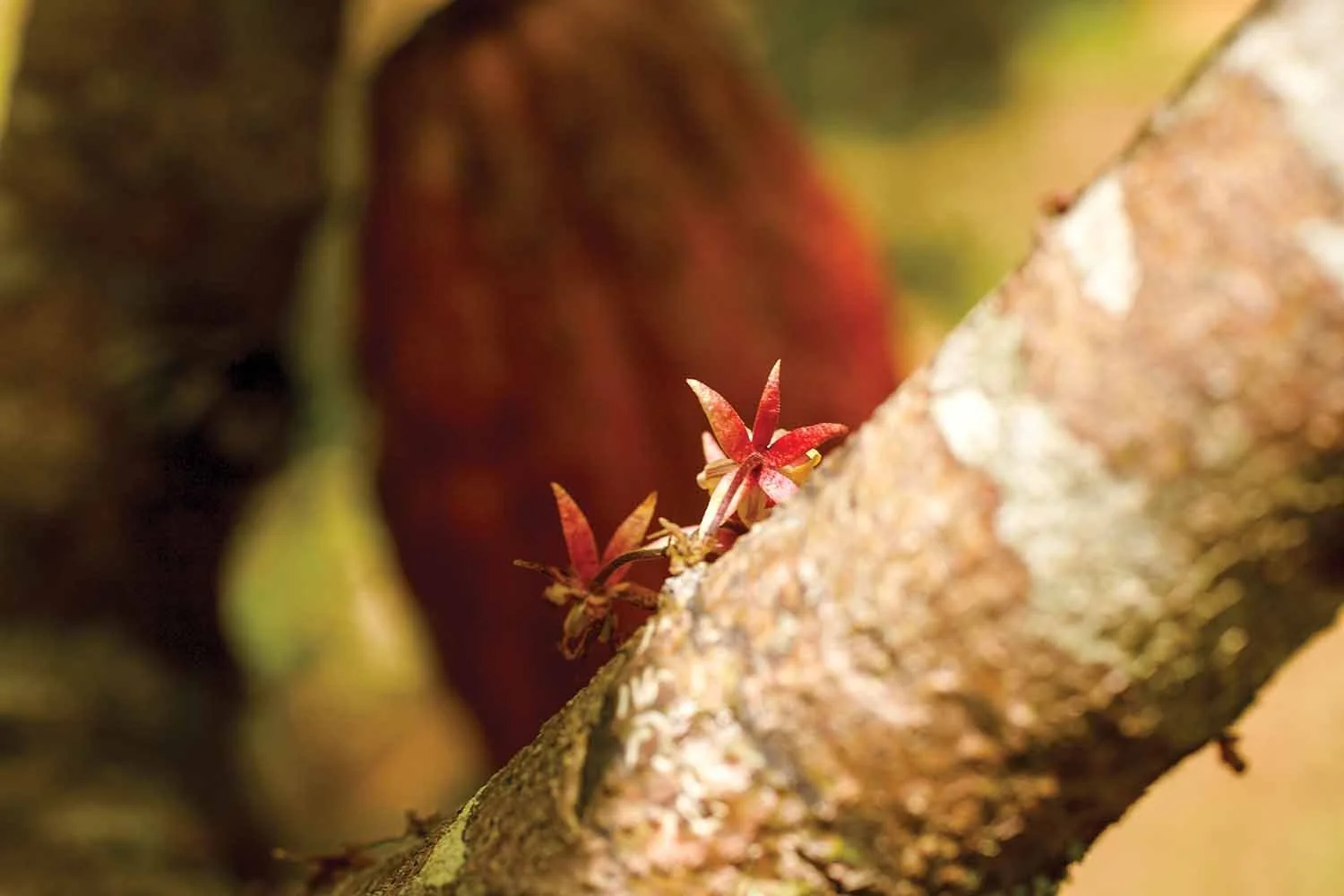Bar Hopping
Creating chocolate requires a careful process of fermentation, drying cocoa seeds, roasting, grinding, tempering and more. It’s a long process but the end result is worth it.
(Photo courtesy Lydgate Farms on Kaua‘i.)
Hawai‘i is geographically blessed by its latitude, being located in the tropics roughly in the band between 19° and 29° North of the Equator. Beyond the technical numbers, there is great significance in that for growers of tropical crops. Beyond indicating the possibility of a year-round growing season — where crops can be planted, reach maturity, and be harvested on timelines unrelated to the typical four temperate seasons — it also means that the islands are primed for the planting of crops that grow and thrive in other tropical regions of the world. Many will be familiar with the more famous ones like pineapple, banana and, particularly in the higher elevations, coffee. Leveraging this unique growing climate is, slightly surprisingly, the cacao crop.
More typically grown in the steamy and humid band just 10° North and South of the equator, cacao was originally introduced to Hawai‘i in the 1830s, but it took more than a century for it to be reintroduced as a viable crop. The mid-1990s saw cacao plantings take hold to the scale where an annual crop could be counted on in subsequent years. This allowed for local producers to emerge and start trying their hand at creating the delectable treat from locally sourced beans. While the emergence of Hawai‘i’s local chocolate terroir took root and the number of farmed trees has expanded since then, the acreage available for cacao production is much like that for Kona coffee. Demand for the product far outstrips the ability for farmers to provide enough beans, leading to a premium and scarcity of the bars beyond our shores.
Across the islands, one will find chocolate farmers, producers, and some who do both. It’s not easy being a farmer, and it is a degree more difficult growing a crop outside of its traditional climate, but on top of that, a few growers also have chocolate production lines where the bean passes through the half dozen or so hand-crafted steps after picking: fermentation, drying, roasting, grinding and tempering before being poured into molds to take its final form. Connoisseurs will note a few missing steps, but the producers all wish to keep some secrets behind their proverbial curtains as they craft bars of delectable Hawaiian chocolate — from the creamiest and most malleable of milk chocolates to the more acquired-taste end of the range in the darker chocolate offerings.
From bean…
…to bar.
(Two photos courtesy Maui Ku‘ia Estate Chocolate.)
(Photo courtesy Honoka‘a Chocolate.)
A favorite pastime for locals is discovering island-specific treats as they island-hop, and the realm of chocolate does not disappoint, with farm-to-bar producers, tours, gift shops, and local retailers all carrying a variety of chocolate that was made just down the road. What’s not to like about doing research on which chocolate to bring back as omiyage, other than having a surfeit of it to sample and share? Luckily, the island producers have refined their craft and elevated products far beyond the cloyingly generic bars that one may have picked out of Halloween candy bags in one’s youth.
With each producer’s bars being handcrafted and uniquely flavored, there’s no point in suggesting a ranked order, but here are some recognizable bars to look out for as one traverses the state. With the range of local chocolates ever expanding, one feels that the appointing of a chocolate sommelier is not far behind. If one is lucky enough to take a tour while popping in, just know that the behind-the-scenes look, and knowledge gained will forever prevent the purchase of another generic convenience store chocolate bar.
Keep an eye out for the Big Island’s Honoka‘a Chocolate (honokaachocolate.com) with their myriad flavors and ingredients blended by founder and scientist Mike Pollard — from a Barrel-Aged Rum Bar to Drunken Goat Milk Bars. On Maui, flavors of a different sort await discovery, with Estate Grown Dark and Cappuccino varieties from Maui Ku‘ia Estate Chocolate (mauichocolate.com) being available in tins and bulk linen bags.
On O‘ahu, a stop at Mānoa Chocolate (manoachocolate.com) will highlight their own blends of guava, liliko‘i and coffee-flavored bars, plus the outlier: the white chocolate mac nut bar.
On Kaua‘i, generations-deep Lydgate Farms (lydgatefarms.com) hew close to their roots with Kōloa Rum bars and a Sea Salt bar that stays close to the Kaua‘i South Shore salt production heritage. Whichever chocolate style strikes your fancy, you will be sure to know that the bar is set high in Hawai‘i.
(Photo courtesy Honoka‘a Chocolate.)





